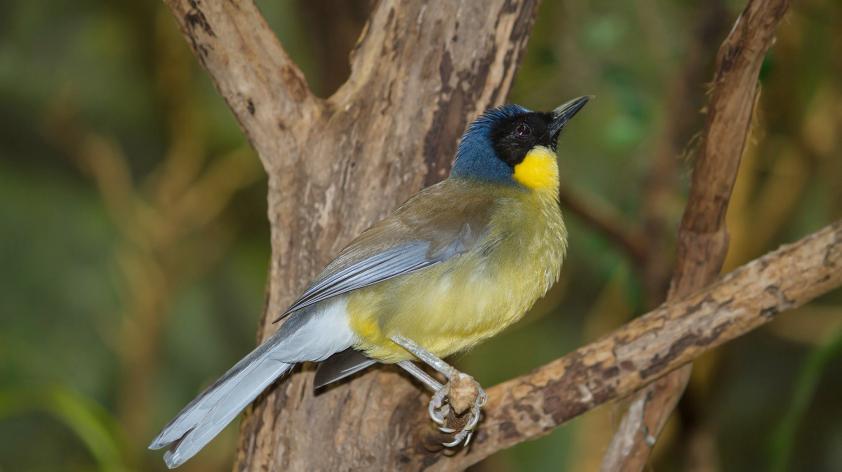
Baggage Check for the Blue-Crowned Laughingthrush
Airlines are getting tighter and tighter with their baggage allowances, and as odd as it may sound, we are doing the same with our conservation programs. All animals carry a certain amount of microbial baggage with them wherever they go. Most of it is the innocuous, or even helpful, microflora in our digestive tracts and on our skin surface, but some of the microbial agents we carry are potential pathogens – if not to us, then to other hosts we come in contact with. What we don't want to do is move a potential pathogen to a new environment where it doesn't belong, and allow it to infect hosts that are not adapted to it.
The blue-crowned laughingthrush is a critically endangered, range-restricted, species from one small forested region of southern China. The causes of decline for this species include exploitation for the pet trade and urbanization of their last remaining habitat. A handful of zoos in Europe and North America, including the San Diego Zoo, are now breeding blue-crowned laughingthrushes to establish reserve populations as a hedge against extinction, and for eventual reintroduction back into the wild.
One major obstacle to reintroduction is the presence of a protozoal parasite (in the genus Isospora) in the breeding populations. This parasite normally does not cause problems in adults, which shed the infective stages in their feces, but it can cause high mortality in fledglings after they leave the nest and began foraging on the ground.
The concern is that this parasite might not be native to the wild population. It could be excess baggage acquired in the captive breeding programs. If so, we would not want to inadvertently introduce this parasite into the naïve wild population in China. Our job is to determine whether this parasite is present in all the conservation breeding groups of the blue-crowned laughingthrush, and whether it is a native, host-adapted parasite, or unwanted baggage – an alien invader that could threaten the last remaining wild population.
We plan to do this by testing all the birds in the breeding programs in Europe and North America, and sequencing the parasite DNA. These DNA sequences will allow us to determine whether only one Isospora species infects the Laughingthrush, and if the phylogenetic trees of the parasite and the bird indicate they coevolved together in the wild.
Our preliminary data suggest that only one species of parasite is involved, which is good news, but we still have a lot of baggage checks to complete. Our mission in the Disease Investigations group is to remove disease as a roadblock to conservation, and we hope to have this roadblock removed within the next 18 months, to help ensure a brighter future for this beautiful bird.
(Photo above by Greg Hume taken at the Cincinnati Zoo.)













